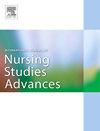Nurses’ and midwives’ knowledge and safe-handling practices related to hazardous drugs: A cross-sectional study
IF 3.1
Q1 NURSING
International Journal of Nursing Studies Advances
Pub Date : 2025-04-14
DOI:10.1016/j.ijnsa.2025.100331
引用次数: 0
Abstract
Background
Hazardous drugs are inherently toxic and can present an occupational exposure risk to healthcare professionals. Hazardous drugs are regularly prescribed for people to treat a variety of medical conditions.
Aim
To explore nurses’ and midwives’ knowledge and practices related to the safe handling of hazardous drugs. Also, to discover if controls of risk are available to support nurses and midwives to implement best practices when handling hazardous drugs in health care settings and if there are any obstacles to using these controls.
Method
This was a cross-sectional study using a convenience sample of nurses and midwives at six Australian hospitals from a metropolitan health care service. In the self-administered, validated online questionnaire, participants were asked to identify hazardous drugs and their use of hazard controls, including personal protective equipment. Variables for self-efficacy, perceived barriers, perceived risk, interpersonal influences, and workplace safety climate were also measured.
Results
A total of 217 nurses and midwives reported they handled hazardous drugs. The questionnaire was completed in full by 156 participants (71.9 %). Participants predominantly identified as women (196/217, 90.3 %) and had completed a bachelor's of nursing (139/217, 64.1 %). The hazardous drugs chloramphenicol, colchicine, and dutasteride were frequently not identified as hazardous (80.6 %, 73.8 %, and 68.2 %, respectively). A total of 78 (35.9 %) participants reported having received hazardous drug handling training, of which 34 (43.6 %) stated it was in the past 12 months. Participants (181/203, 89.2 %) agreed or strongly agreed that they were confident that they could use personal protective equipment correctly and were provided with the best available personal protective equipment (163/203, 80.3 %). Despite this, personal protective equipment was never worn by approximately a third of participants who reported being involved in preparing, administering, and disposing of hazardous drugs (32.2 %, 29.8 %, and 30.9 %, respectively).
Conclusion
Nurses and midwives did not always recognise hazardous drugs, and, although they were confident in using appropriate personal protective equipment, some reported never wearing it. A multi-faceted multidisciplinary intervention is needed to improve both knowledge and practice for handling both cytotoxic and non-cytotoxic drugs by nurses and midwives.
护士和助产士与危险药物相关的知识和安全处理实践:一项横断面研究
有害药物本身具有毒性,可能对医疗保健专业人员构成职业暴露风险。人们经常开危险药物来治疗各种疾病。目的探讨护士和助产士在安全处理危险药物方面的知识和做法。此外,查明是否有风险控制措施,以支持护士和助产士在卫生保健环境中处理危险药物时实施最佳做法,以及在使用这些控制措施方面是否存在任何障碍。方法本研究是一项横断面研究,选取了澳大利亚六家医院的护士和助产士作为方便样本。在自我管理、有效的在线问卷中,参与者被要求识别危险药物及其使用的危害控制措施,包括个人防护装备。自我效能、感知障碍、感知风险、人际影响和工作场所安全气候等变量也被测量。结果共有217名护士和助产士报告曾处理过危险药品。156名参与者(71.9%)完整完成了问卷。参与者主要为女性(196/217,90.3%),完成护理学士学位(139/217,64.1%)。危险药物氯霉素、秋水仙碱和杜他雄胺经常不被认定为危险药物(分别为80.6%、73.8%和68.2%)。共有78名(35.9%)参与者报告接受过危险药物处理培训,其中34名(43.6%)表示在过去12个月内接受过培训。参与者(181/ 203,89.2%)同意或强烈同意他们有信心能够正确使用个人防护装备,并获得了现有的最佳个人防护装备(163/ 203,80.3%)。尽管如此,大约三分之一报告参与危险药物制备、给药和处置的参与者从未穿戴个人防护装备(分别为32.2%、29.8%和30.9%)。结论护士和助产士并不总是认识到危险药物,尽管他们有信心使用适当的个人防护装备,但一些人报告从未戴过。需要多方面的多学科干预来提高护士和助产士处理细胞毒性和非细胞毒性药物的知识和实践。
本文章由计算机程序翻译,如有差异,请以英文原文为准。
求助全文
约1分钟内获得全文
求助全文
来源期刊

International Journal of Nursing Studies Advances
Nursing-General Nursing
CiteScore
5.80
自引率
0.00%
发文量
45
审稿时长
81 days
 求助内容:
求助内容: 应助结果提醒方式:
应助结果提醒方式:


